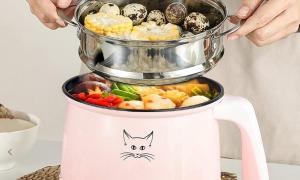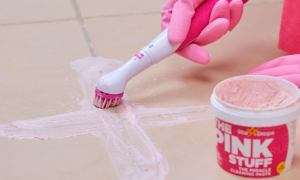Ah, mold. What is it, aside from that pesky spore that ruins your bread and those leftovers you swear have been in your refrigerator for only a couple of days? There are over a thousand different types of mold, but the most common indoor molds are cladosporium, penicillium, alternaria and aspergillus. Mold can be white, black, orange, green or purple and they survive best in warm, damp and humid conditions.

Mold can grow almost anywhere, but it can most commonly be found around leaks in your roof, windows, pipes and where there has been flooding. It can also grow on paper products, cardboard, ceiling tiles, dust, paint, wallpaper, carpet, fabric and upholstery. It thrives in places that are dark and high in humidity, like your shower or basement.
Videos by PopCulture.com
Some people are more sensitive to mold than others, which can lead to health problems. Those at higher risk are infants and children, the elderly, immunocompromised and people with chronic lung disease, asthma and allergies. Symptoms usually appear as nasal stuffiness, throat irritation, coughing or wheezing and eye or skin irritation. If you’re allergic to mold you may have more severe reactions like a fever or shortness of breath. (via WebMD)
>> Read more: 10 Healthy Household Cleaning Products
The key to getting rid of mold is good ventilation. By turning on your bathroom fan after you finish your shower, you’re getting rid of the moist air, which prevents mold. The best way to control the mold is by:
- controlling humidity levels
- fixing leaky roofs, windows and pipes
- cleaning and drying your home within 24 to 48 hours of flooding
- ventilating the shower, laundry and cooking areas
- add mold inhibitors to paints before painting
- clean bathrooms with mold-killing products
- remove or replace carpets and upholstery that has been soaked and can’t be dried properly
You can get rid of mold with commercial products, soap and water or a bleach solution. The CDC recommends a bleach solution of 1 cup bleach and 1 gallon of water. If you do use bleach, remember to open your windows as well as wear protective gloves and eye wear. (via CDC)
>> Read more: Homemade Green Cleaning Products

Here are a couple of sneaky areas that mold can be found in from Good Housekeeping:
The detergent chamber of your washing machine: It’s a perfect combination of damp and dark, so mold would love to grow here. To prevent mold, keep the drawer open after every wash so that the chamber can dry out.
Inside your chimney: If your chimney cap is rusted, it may let in rain and snow, allowing mold to grow in brick crevices. You may want to hire a chimney sweep to clean your chimney once year. This prevents mold and keeps your chimney working properly.
Under windowsills and sink cabinets: If you find a leak around your window or sink cabinet,be sure to get it fixed before mold can find its way there. To get rid of mold around these areas, use your bleach mix and scrub with a nylon brush. Remember to open your windows and put a tarp down. Wait 15 minutes after scrubbing, rinse with water and dry thoroughly with a fan.
Dishes: You’re busy so sometimes you might put your dishes away while they’re still damp. It’s okay, but this damp area is a perfect place for mold to grow. If you do see mold on your dishes, run them through your dishwater and wipe down your cabinets with a vinegar-soaked cloth.
Leather car seats: Mold just loves leather, so be sure to ventilate your garage to avoid mold growing in your car.





